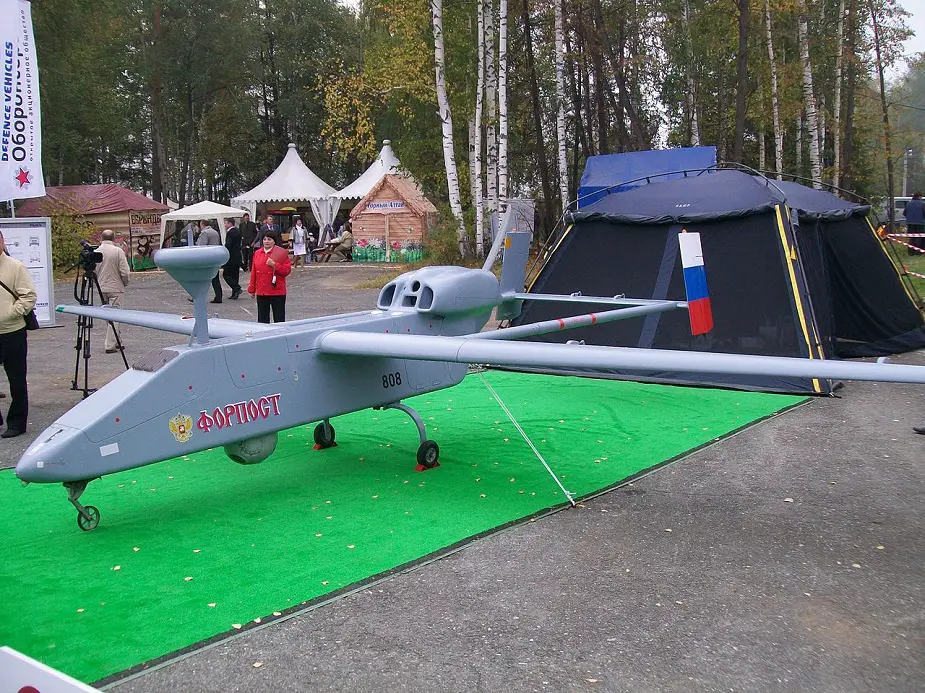Russian naval aviation armed with drones (part 1)
The Russian Navy follows the trend to operate robotic systems and increases the use of unmanned aerial vehicles (UAV) in the naval aviation. Naval aviation Commander Major-General Igor Kozhin said drone development for the Navy is a priority guideline for leading design bureaus. The naval aviation has to upgrade the fleet and gradually replace it with new aircraft in the near future. It has to receive a hundred new aircraft, including drones by 2020, expert Denis Fedutinov writes in the Independent Military Review.
 Forpost UAV (Picture source: Letagur)
Forpost UAV (Picture source: Letagur)
The Navy began to create drone units in 2013. The first two ones were launched in Severomorsk and Kamchatka. In 2013, the Northern fleet created a drone unit comprising close to 20 men. In 2014, the Pacific fleet airbase in Kamchatka received several Forpost drones and the ground control station. A drone unit was later formed in Crimea.
In 2014-2015 drone units were developed into squadrons and subordinated to the naval aviation bases. Another squadron was created in the Baltic Sea area. By December 2016, the squadrons were transformed into drone regiments and each had to have close to 400 men.
The Navy mostly uses Forpost drones which are produced by the license of the Israeli IAI Company at UZGA enterprise in Yekaterinburg which is also creating a localized option of the drone. It is a double-beam vehicle with a high wing and pusher propeller. The drone has a maximum takeoff weight of 450 kg and can ascend to seven kilometers and fly for 18 hours. It is a multirole drone which has similar characteristics with Medium Altitude Long Endurance (MALE) vehicles.
Forpost is distinguished by modern high-quality optical and electronic reconnaissance and monitoring systems. Its main mission in the naval aviation is to search, detect and identify ground objects at a major distance and transmit real-time information to the command post.
The Navy also uses Orlan-10 designed by STTs Company from St. Petersburg and widely engaged by the Ground Forces. It has a normal aerodynamic scheme with a high wing. The internal combustion engine with a pusher propeller is located in the front of the vehicle. The takeoff weight is close to 14 kg. The drone can operate at a distance of 100-120 km from the control panel and fly for 12-16 hours depending on the payload. The vehicle has reconnaissance, electronic warfare and other modifications.
Such drones are used on Karakurt-class corvettes of project 22800. The first warship armed with the drone was displayed at the main naval parade in St. Petersburg in 2018. Orlan-10 can reportedly be supplied to project 11356 frigates. The seaborne Orlan-10 can land onto a net spread between inflatable supports.
In 2012, there were plans to test helicopter-type Horizon Air S-100 drones in the Navy. They are produced by the license of Austrian Schiebel Company at Gorizont enterprise in Rostov-on-Don. The vehicle has a traditional single-propeller scheme with a steering rotor. The takeoff weight is close to 200 kg, including 50 kg of payload. The range is 150 km. The drone can fly for 6 hours with a 35-kg payload. However, there is no information about the procurement and engagement experience of the drones.
Stay tuned for more content...
© Copyright 2019 TASS. All rights reserved. This material may not be published, broadcast, rewritten or redistributed.


























